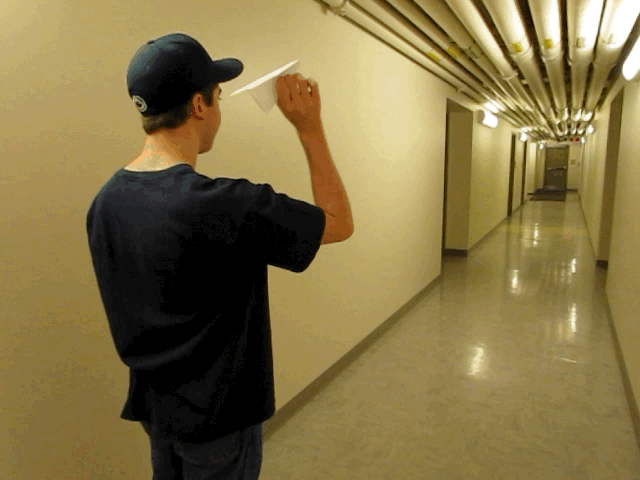Written by Rick Kubina
Creating good pinpoints for data collection can sometimes be a daunting task. Pinpointing might take time, involve checking the dictionary, and sometimes include a healthy debate about word choices. But everyone can learn the steps for creating a good pinpoint:
- Action verb (make it present tense by adding an “s”)
- Object that receives the action of the verb
- Context of action + object
Check out the clip below and think about how you would label the behavior.

Figure 1. A behavior in need of a pinpoint
I asked a few people what they saw, and I received the answers below:
● Throwing a paper airplane
● Grasping a paper airplane and throwing it
● Launching a paper plane
● He is throwing an object
All of those previous answers do describe behavior. But how do we count “Throwing a paper airplane?” When does the behavior start and stop with the verb “throwing?”
“Grasping a paper airplane and throwing it” actually involves counting two behaviors, grasping and throwing. And can a person throw a paper airplane without grasping it? Therefore, we don’t really need the added baggage of a second behavior.
What about “launching a paper plane?” The second definition of launch reads “start or set in motion.” That might work but the verb launch lacks precision. How exactly did the person launch the plane? Launching does not necessarily mean throwing.
And the last classification, “He is throwing an object,” has two problems. First, the statement describes the person actively behaving, which is not the best label for determining when the behavior ends. Second, the object receiving the action, “object,” does not have the same precision as “paper airplane.” People can easily identify “paper airplane” over the more general term “object.”
Pinpointing behavior
So how do we become more precise? With our pinpoint formula. Let’s plug in the behavior and see what it looks like.
- Action verb (make it present tense by adding an “s”) – Throws
The definition of “throw” works well: propel (something) with force through the air by a movement of the arm and hand.
2. Object that receives the action of the verb – Paper airplane
“Paper airplane” serves our purpose best because it receives the action of a throw. We make it singular because a count of one equals “throws airplane.” If we said “throws airplanes” we have a much harder time counting one instance of the behavior.
3. Context of the action + object – In hallway
Looking at the clip, we see the context for our count. If we wanted to count “throws airplane” somewhere else, like “during class,” we could. The context alters our evaluation of the pinpoint. We would consider “Throws paper airplane in the hallway” a leisure skill and view it as an acceleration target. “Throws paper airplane during class” makes for a deceleration target, something we wouldn’t like to see.
Our final pinpoint then becomes “Throws paper airplane in the hallway.”
Success!
Challenging pinpoints
The more a person pinpoints, the greater the likelihood of running into a difficult behavior. One of the more challenging pinpoints I have encountered came in the form of “eye contact.” People have difficulty counting eye contact because it forms a noun and does not contain movement. In other words, it does not pass the “dead man’s test.”
Some teachers have used the pinpoint “moves eyes toward speaker.” A dead man cannot move his eyes towards a speaker. But the “moves eyes” pinpoint better captures instances where someone looks at another. Let’s say I called your name. We could count “moves eyes toward speaker.” But eye contact lasts longer than a glance. Teachers oftentimes want a sustained gaze. What pinpoint can we use?
Recently our company had visitors from across the pond. Two fellow colleagues Jen Shahin and Erin Baker worked with us on the challenge of coming up with a pinpoint for eye contact.
Both Jen and Erin puzzled through many different action verbs and objects receiving the action. They came up with “aims gaze at speaker for 3 seconds.” This is a wonderful pinpoint that passes the dead man’s test and makes for an easily countable behavior.
Success!
I always take great joy in finally cracking the nut of a tough pinpoint. Perhaps that sounds nerdy, but I live in the world of behavior change. Coming up with an easy-to-count pinpoint demands careful work. Agents of precision will always endeavor to create pinpoints with the most clear, observable action verbs, accurately named objects, and unambiguous contexts.



